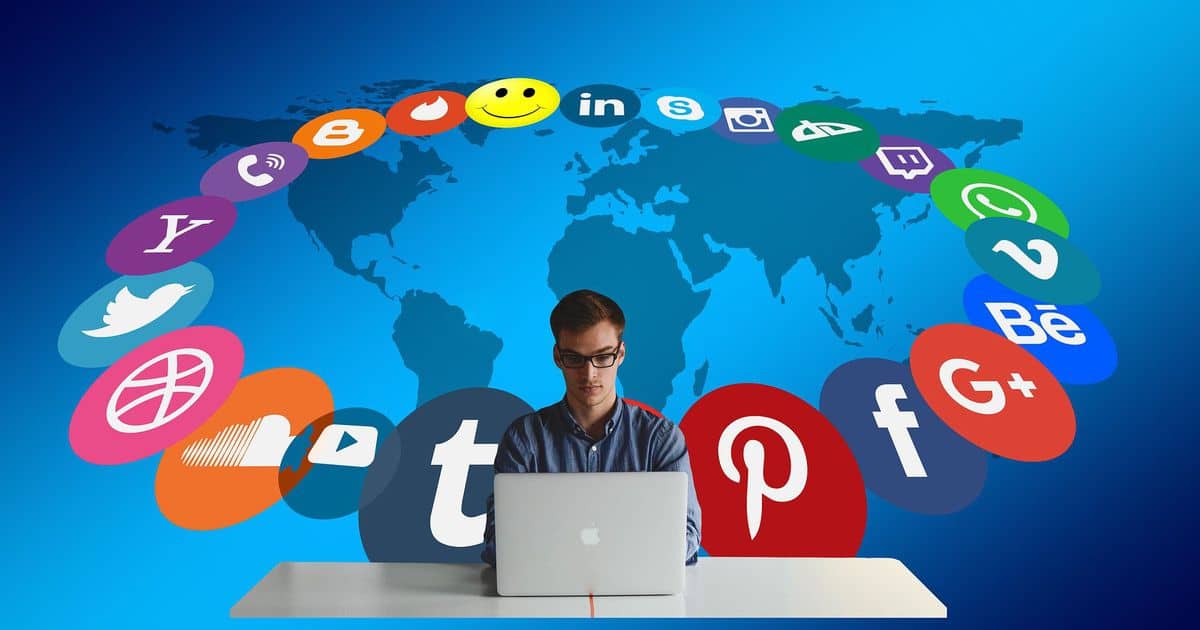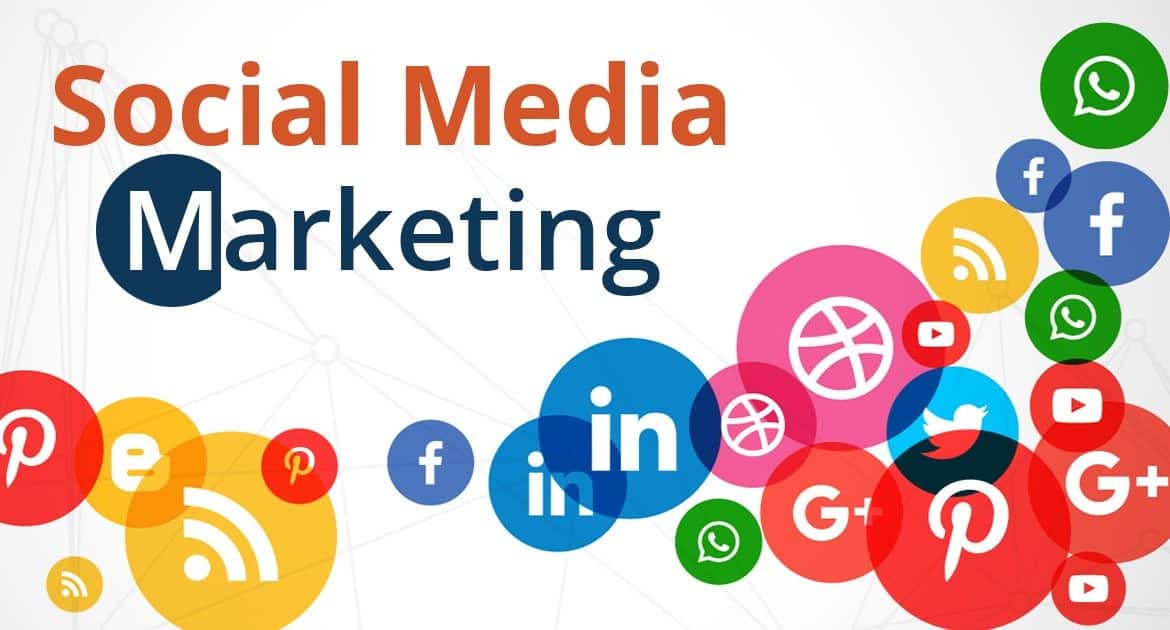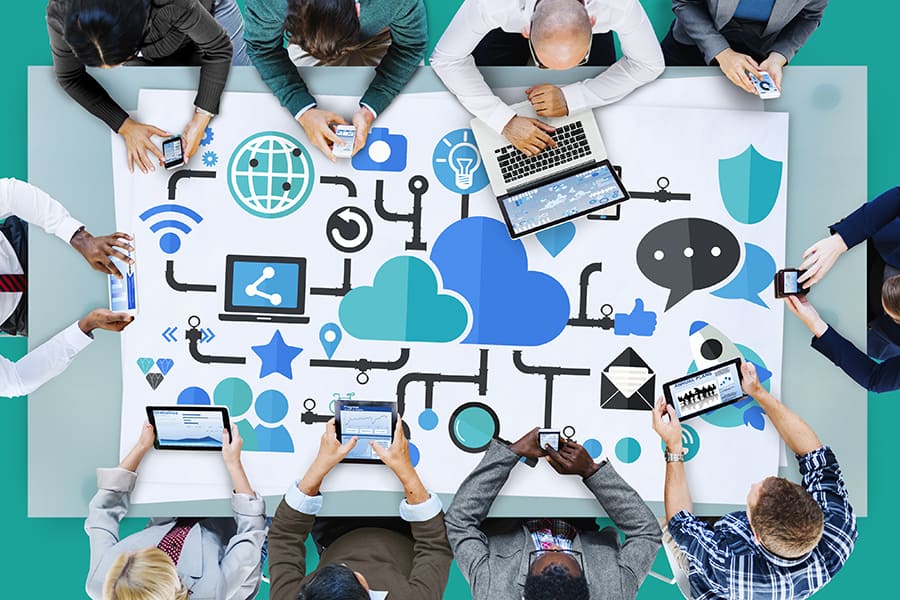The future of social interaction in a digital economy isn’t just coming; it’s here. As we tap and swipe our way into a world where screens are the new meeting grounds, our connections grow more pixels than handshakes. Imagine communities not bound by geography but by interests and ideas. Think of social media not as a pastime, but as a pulse on emerging trends. And don’t overlook tech like augmented reality that’s morphing chats into shared virtual spaces.
But with all this cool tech, we can’t forget what counts: staying real in our digital bonds. With AI fine-tuning our networks and ethics shaping our online world, we’re standing at the crossroads of change. Let’s take the reins and steer towards a cyber society where people aren’t just data points, but part of a connected community, thriving together.
Navigating the Evolution of Digital Society Interactions
Embracing Virtual Communities and Their Continuous Evolution
We all see it: our world’s becoming more digital every day. We do more online, from where we work to how we hang out with friends. A big part is the rise of virtual communities. It’s where folks with common interests gather, no matter where they are. They’re cool spots online where we learn, share, and make pals.
These virtual communities change a lot, too. They keep getting better at bringing people together. Take a book club. Now, instead of meeting at a library, fans from around the world can meet in a digital space. There, they talk about the latest page-turner as if they’re in the same room. This way, we’re not limited by where we live. We can find our tribe anywhere.
The Future of Social Media: Anticipating Emerging Trends
Thinking about social media – it’s morphing every day. The future looks full of new stuff that’ll shape how we yak with friends and strangers. One trend growing fast is using augmented reality in communication. It’s like a filter on your phone’s camera that drops funny hats on your head in videos, but fancier. This tech can help us feel more there when we chat online.
Imagine doing more than liking a post. Maybe you’ll give it a high-five that everyone can see. Or use virtual reality networking to hang out in a game-like world. These ideas aren’t just guesswork. They are the future of how we’ll connect. And it’s not just fun and games. Businesses use these tools to let teams work together, even if they’re not in the same place.
Then there’s AI helping us meet new people. It might suggest folks we’d hit it off with, just by knowing what we like. Or chatbots make customer service smoother. All these changes keep our online social behavior fresh. They shake up how we talk, share news, and support each other.
As this digital society evolves, we’ve got to stay on the ball. How we act online matters. We want to be kind, smart, and safe. Good digital etiquette is a must. It might be thanking someone for a helpful chat or thinking twice before sharing a rumor. And don’t forget about privacy. The info we share can spread far, so being careful with details is key.
In this digital ride, we’re all in it together. We need to look out for each other and keep growing. Staying connected as humans – laughing, sharing stories, helping out – that’s what makes these bits and bytes feel real. We’re heading into a world where our digital and real lives blend. How cool is that? We get to build a future where friendship and work cross new frontiers, thanks to the internet giving us new ways to meet and share. We’re shaping this digital future as we go, creating a place where everyone can thrive.
The Role of Immersive Technologies in Personal and Professional Networks
Augmented Reality: A New Dimension in Communication
Imagine you’re talking to a friend. But they’re not there. They’re in a phone or a computer. Yet, it feels like they’re right by you. That’s what augmented reality in communication is about. It adds bits of a digital world into our real one. For example, you might see arrows on the road as you walk. Or a model heart floating above your desk in a class. With augmented reality, talks become more than just words.
Here’s why it’s cool for chats and jobs. You can see stuff that’s not really there. This makes learning fun and working together easy, even when far apart. It’s like having superpowers in a talk. You can show and not just tell. You can share your screen and draw on it. Or make a 3D model pop up on the desk.
But this tech must be easy to use. Everyone should be able to jump in. Kids, parents, teachers, and bosses. This way, we all get to play in this new talk space. We have to think about people who might find this hard. We make guides and keep things simple. That’s how we bring this wonder to all.
Virtual Reality Networking and Remote Collaboration
Now, think bigger. Not just a chat with a 3D heart. Think about a whole new place. That’s virtual reality networking. You wear a headset and jump into a new world. You can meet with a team that’s miles away. You can build things together or walk around a new design. It’s like a game, but for real work.
This way of meeting saves time and money. No need for long trips. Just hop into this virtual place and do your thing. It’s great for making friends too. You can play games, go to concerts, or just hang out in these virtual spots.
But let’s keep it real. Not everyone can get these headsets. They can cost a lot. Plus, some folks might feel sick in these worlds. We need to find ways to make it fun for all. Give choices for how to join in. Make sure no one gets left out. That’s the plan.
These tools are part of the future communication technologies. They’re shaping how we’re going to talk and work. We’re moving to a time where meetings are fun. Where learning feels like play. Where new friends can be next door or oceans away. This tech keeps getting better. And as it does, we make it fit our lives. The goal? To make sure everyone can ride this wave. To show the world how cool it is to talk and work in these new ways. And most of all, to connect us all in a dance of digital society interactions.
The Intersection of AI and Social Interaction in the Digital Age
Leveraging AI for Enhanced Social Networking
Think about your friends online. Now imagine them knowing just what you like. AI does that. It sees what we enjoy and suggests friends who like the same. This is AI in social interaction. It’s like having a friend who knows all the best people. It makes it easy to find pals who get your jokes. And the fun does not stop there.
AI helps avoid fake news too. It learns what’s true and cuts the lies. This means we can trust more of what we see and share. Trust is a big deal when we talk and share online. No one likes to be fooled. With AI, we’re safer from tricks.
Machine Learning: Personalizing Digital Community Experiences
Every click, like, and share, tells a story. Machine Learning hears it. It tunes into your style and sends you more of what makes you smile. This is machine learning in networking. It’s smart and keeps getting smarter. Like a good buddy, it knows what you’ll like before you do.
It helps shops show you cool things to buy. It knows you well, so it picks just the right stuff. This is eCommerce and social engagement getting along. They make shopping fun and personal. Plus, they save you time.
Machine Learning helps with jobs too. It finds the work chats that matter most. It’s a helping hand when your inbox is too full. This is remote work and socializing made better. It’s like having a helpful pal in your computer.
Your music and movies get better too. With each pick, the next one’s a hit. No more wasted time on things you won’t like. This is digital transformation social impact in your chill time.
In our digital world, AI and Machine Learning light the way. They help us find joy and stay real, even when we’re far apart. They’re the power behind a global chat that stays fun and safe.
So look forward to more talks, more laughs, and more real connections. This is our future, making friends in a smart, digital age.
Ethical Considerations and Connectivity in a Cyber Society
Data Privacy: Navigating Social Interactions Online
We live in a world where online chats are common. It’s cool to meet folks from all over with just a click. But here’s the deal: When we talk and share online, we must think about who else might see our stuff.
Imagine you’re whispering a secret. You don’t want others to hear, right? Well, online it’s the same. We need to keep our secrets safe when we’re in digital society interactions. I tell kids, “Don’t share your name or where you live.” This is like keeping your home locked tight. No bad guys allowed!
Now, let’s chat about virtual communities evolution. These are places where we hang out online. They grow and change a lot. It’s exciting but also tricky. We need to think on our feet to stay cozy and connected. Remember playing tag? Someone yells, “You’re it!” and you run. In online games, we run after fun and friendship. We keep changing the rules to stay safe and have a blast.
So, here’s the scoop on social media trends future. We all love to post, like, and share. But guess what? We need to be choosy about what we post. It’s like picking your best toy to show your friend. You don’t want to show something that will get you in trouble, do you?
Let’s dive into virtual reality networking. It’s like putting on magic glasses and stepping into a new world. We can meet and work with people far away as if they’re right here! Pretty cool, huh? But even with magic glasses, we should remember to be kind and play fair.
The Human Aspect: Maintaining Connectivity and Human Interaction
Now, for the warm and fuzzy stuff – keeping our human touch in a cyber world. We use tech to talk, work, and play even when we’re not in the same place. It’s like having a robot buddy who helps you chat with a friend in another town.
Using augmented reality in communication is like adding superpowers to talking. You might see a funny hat on your friend’s head when you chat. This makes it way fun, but let’s not forget to ask, “How was your day?” That small question keeps us truly connected as pals, not just screen names.
And get this: remote work and socializing are like having a pajama party but for work. We can do our jobs cozy in our homes. But we all need high-fives, so let’s find ways to send virtual ones and keep the team spirit up!
We see, in a digital economy, it’s not all about cool tech. It’s about people. Whether we’re texting, gaming, or Zooming, we’re still us, looking for friends and folks to share the day with. So let’s promise to be kind and careful online. Let’s make the cyber world a friendly town where everyone says, “Howdy, neighbor!” and really means it.
In this post, we explored how digital society is changing how we connect. We saw virtual communities grow and discussed what social media might do next. New tech like augmented reality is changing talks at work and with friends. Smart tools like AI help tailor our online spaces. But we must stay smart about keeping our details safe and remember the real people behind the screens. As we move forward, let’s blend new tech with true human touch. This balance makes our digital future bright and full of promise. Keep these ideas in mind as you dive into the evolving online world. Together, we can shape how we interact for the best.
Q&A :
How will digital economy shape the future of social interaction?
With the digital economy’s rise, social interaction is increasingly occurring through online platforms. This shift is likely to persist and evolve, as virtual meetings, social networking sites, and digital collaboration tools become more integrated into daily life. The digital economy facilitates instant communication across distances, potentially leading to more diverse interactions but also challenging traditional face-to-face social dynamics.
What are the potential benefits of social interaction in a digital economy?
Social interaction in a digital economy offers numerous benefits, such as the ease of connecting with people across the globe, increased access to information and resources, and the possibility for flexible work arrangements. It can also foster inclusivity by providing platforms for voices that might otherwise be marginalized. Moreover, it can drive innovation and creativity by connecting diverse groups of people to collaborate easily.
How might increased digital interactions impact mental health?
Increased digital interactions can have a mixed impact on mental health. On one hand, they can provide a sense of community and support for individuals who might otherwise feel isolated. On the other hand, excessive use of digital media can lead to issues such as increased anxiety, depression, and social isolation. The key will be finding a balance and using digital tools to enhance rather than replace in-person relationships.
Can digital interactions replace the need for in-person social connections?
While digital interactions are becoming more sophisticated and can mimic many aspects of in-person social connections, they cannot completely replace the need for physical presence and touch. Human beings are inherently social creatures, and in-person interactions have nuanced emotional cues and physical experiences that digital interactions cannot fully replicate. However, digital interactions can complement and enhance our social lives, particularly when geographical or physical barriers exist.
What role will emerging technologies play in the future of social interaction within a digital economy?
Emerging technologies like virtual reality (VR), augmented reality (AR), and advances in artificial intelligence (AI) are set to dramatically change how we interact socially within a digital economy. VR and AR can create immersive environments that make digital meetings and social interactions feel more real, while AI can provide personalized experiences and facilitate connections. These technologies have the potential to make digital interactions more engaging and lifelike, further blurring the lines between the digital and physical worlds.



